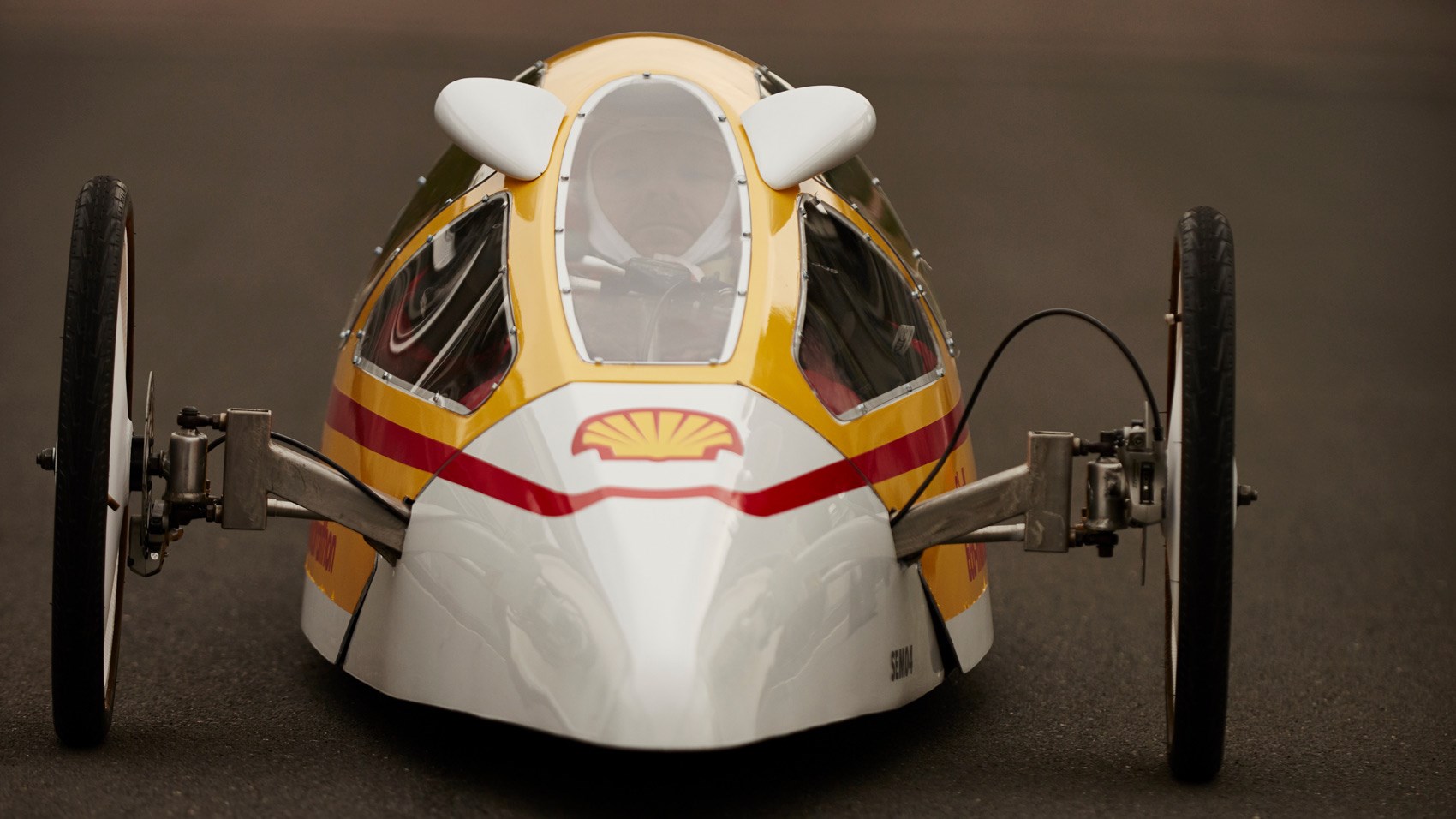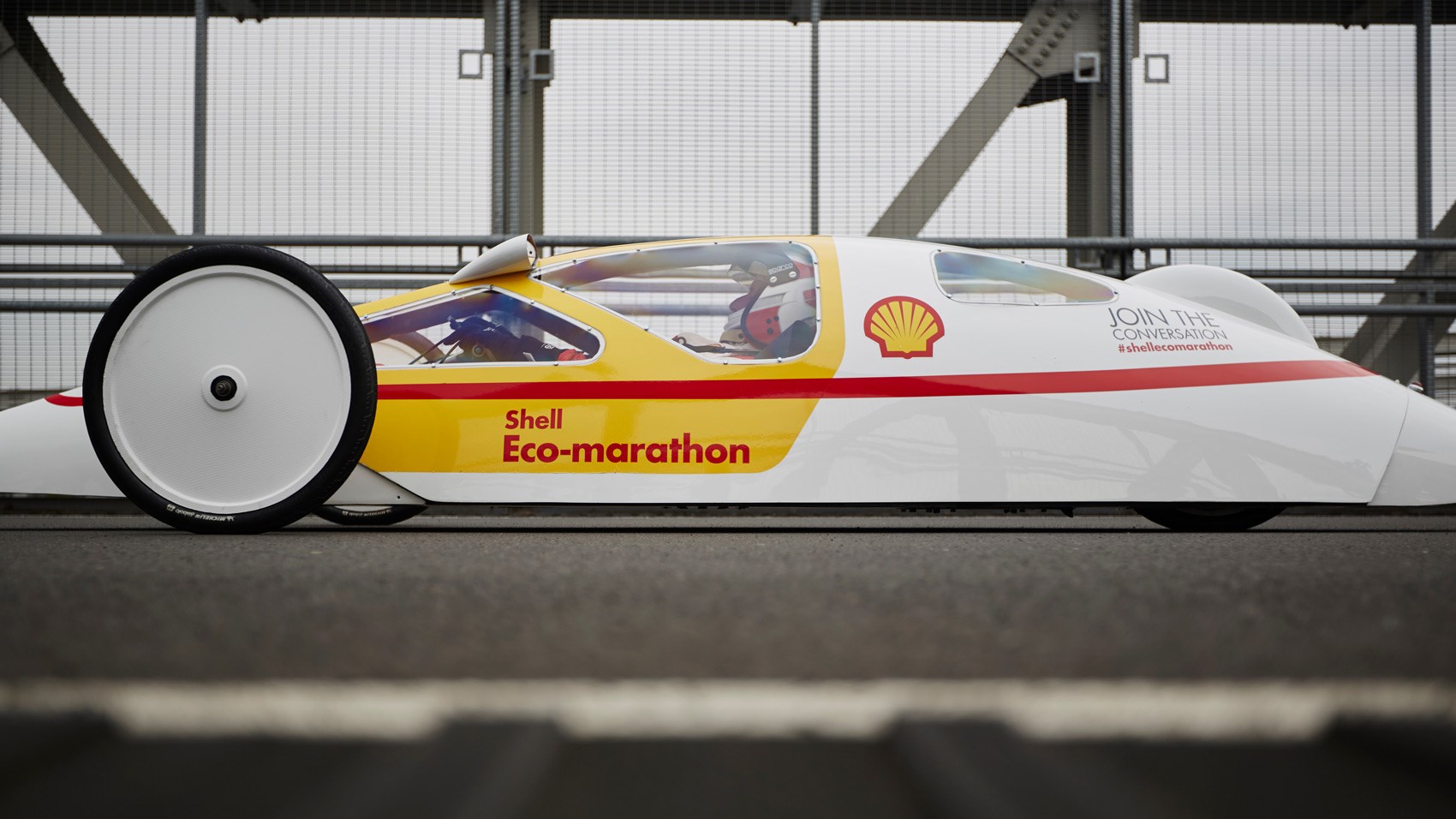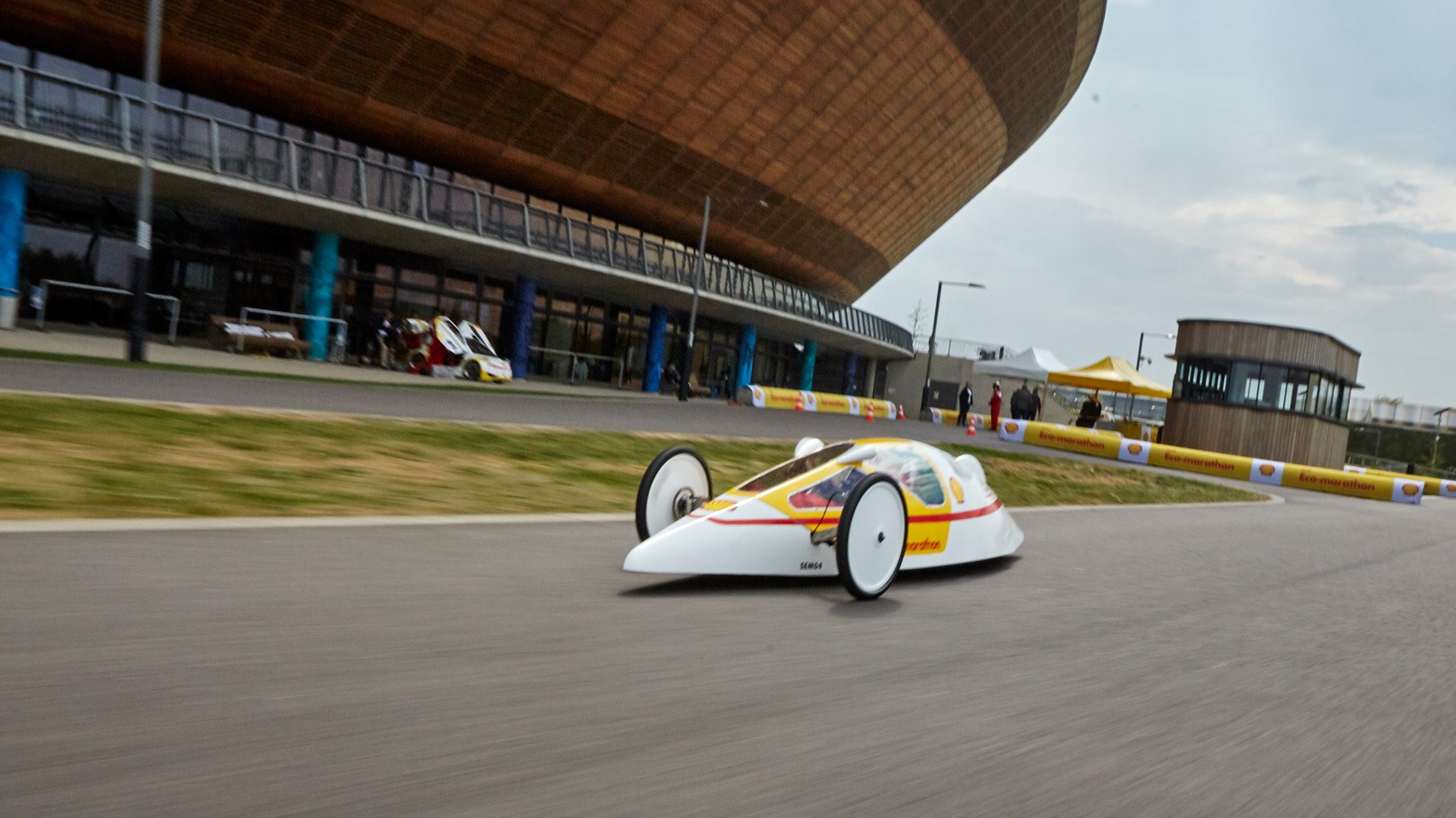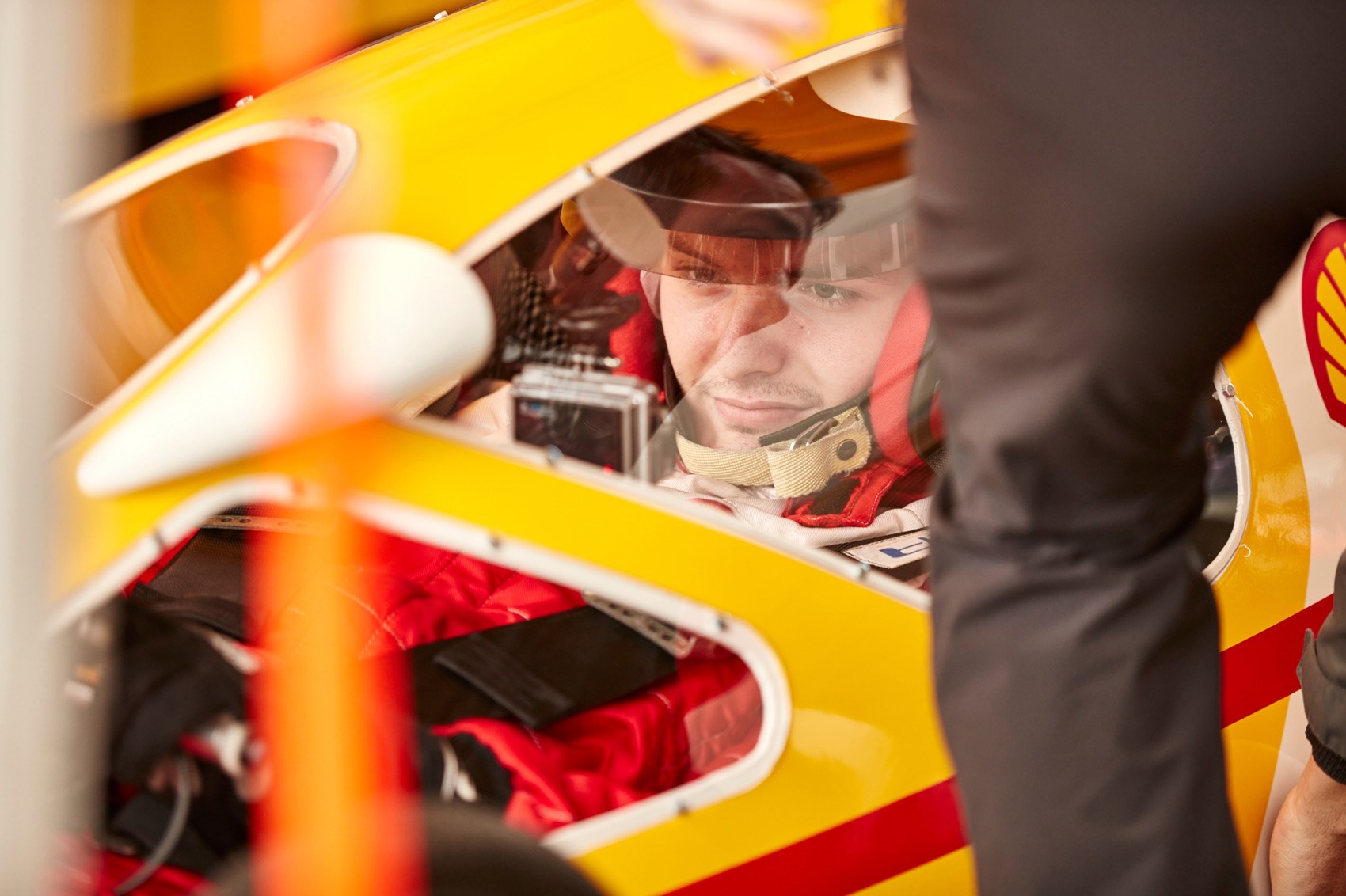► Shell eco prototype driven
► Madcap car made for ultimate mpg
► Designed to cut through air
Is this the weirdest vehicle CAR has ever driven? Quite possibly. This knee-height torpedo-on-wheels is designed with fuel economy in mind, and is designed to give automotive hacks an idea of what competitors in the Shell Eco-Marathon have to deal with if they want to compete.
What’s the Shell Eco-Marathon?
It’s a competition hosted in three major locations around the world that’s all about efficiency rather than speed. Although there have been fuel economy competitions for far longer, the Eco-Marathon’s official starting point was 1985.
The idea is that university teams have to design, build and test their own super-economical car within a certain time period to then compete in events in Asia, America or Europe.
‘800 universities a year apply, we have 500 teams that then come and compete in Asia in Singapore, Detroit in the US and here in London’ says Eco-Marathon general manager, Norman Koch, ‘and the challenge is as it was 33 years ago – build the most energy-efficient vehicle.’
‘The record now stands at 3771km per litre [10,652mpg], so that’s from London to Helsinki and back on one tank of fuel,’ adds Koch.

There are two classes of, er… car at the event. ‘Prototype cars are all about efficiency’, explains Koch, ‘the entire purpose of these cars is maximum driving efficiency for one person driving. Blue-sky ideas are possible and designs can be really optimised for pure efficiency.’
On the other hand, the UrbanConcept class has to adhere to certain restrictions. ‘As the name says, this car is designed to resemble an urban city car. You must have features like lights and a windscreen wiper and an upright seating position, for example.’
So this is in the Prototype class?
How did you guess? It’s built by French company Fior Concept and it’s called the SEM 03.
It’s 700mm tall – no higher than your average coffee table – and built to cut through the air as cleanly as possible. You drive it similar to a quad bike, where there’s a set of handlebars directly controlling the steering and the throttle is a small lever operated by your left thumb.

It’s powered by a 4.88bhp 1-cyl 4-stroke Honda GX160 engine usually found humming away behind the burger vans found at fun fairs.
So what’s it actually like to drive then?
It’s absolutely mad and highly entertaining. You lie almost completely flat and your head is tilted so far forward your chin hits your chest. You have to point your toes inwards (‘like a ballerina’, according to the instructor) and cram them as far down the cone at the front as your poor legs will allow.
You’re strapped into a five-point harness and require two glamorous assistants to lower the canopy roof and fix it to the chassis. You’re then cocooned in something that is essentially a greenhouse with some cartwheels stuck onto it.

Performance from the four-stroke Honda engine isn’t exactly sprightly, but you have to bear in mind why this thing exists. The throttle must be managed and used as sparingly as possible if you’re to have a hope in hell of setting a decent economy figure from the 250ml fuel tank. Estimates pin this prototype’s fuel economy figure at around 500mpg.
Bumps are dealt with in the harshest way possible, in that even the smallest of dents or holes in the road will force the car to jolt and jerk wildly. Our test route at the Velodrome at London’s Olympic Park was mostly free of any significant holes in the road, apart from the expansion gaps for the bridges, where the car’s massive dustbin lid wheels thrash over them.

The clear canopy rapidly heats the driver like an ant caught in a magnifying glass, so you quickly dream up thoughts of a cool ice cream or a cold shower after a few minutes at the helm. A Mercedes S-Class it most certainly isn’t.
But that’s the point. This car has only one purpose in life: to be as fuel-efficient as possible without regard for comfort or speed. That single-track goal exemplifies the dedication of the university teams that have to drive their prototypes for up to 40 minutes at a time, in locations like Singapore where humidity can bend the will of even the hardiest of students.
It was an experience to remember, driving this… thing, but it’s also one that confirms many of our suspicions that there are still plenty of people in this world who have a real passion. A passion not just for cars and motoring, but the development of automotive science. Cars like these are a testament to the dedication of the teams that take part.
You can see the Shell Eco-Marathon in action at London’s Make the Future Live event